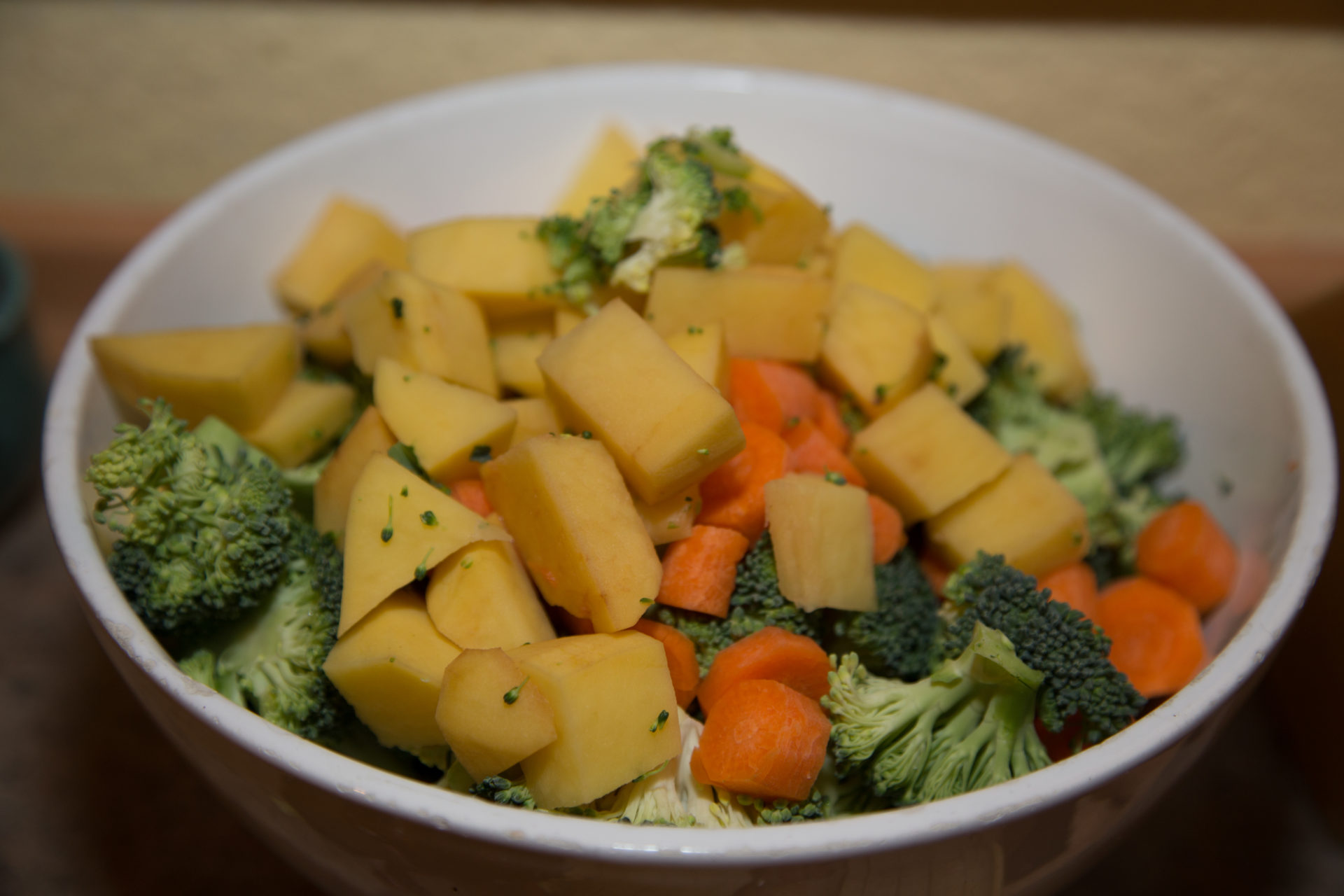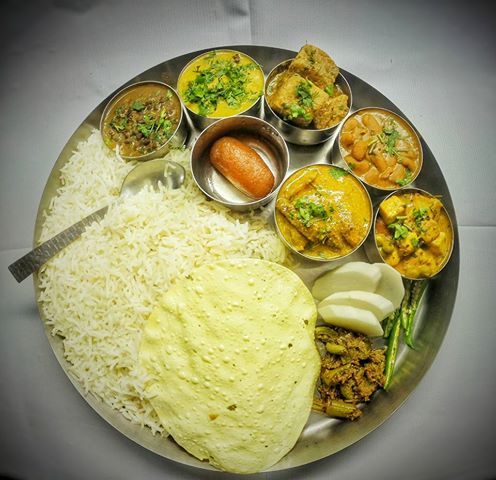Travelling around India as a vegetarian or vegan

As a travelling vegetarian, india is a true paradise. Nearly 80% of the Indian population is vegetarian and abstain from meat. In some places it is even almost 100% and in a few places, such as Kerala or in the mountain states a little less. But no matter where you are, no one will be surprised about your meatless diet and there will be a plentiful, varied and full range of vegetarian dishes.
Indians live vegetarian mostly for ethical and religious reasons and less because of ecological and health motives. Even the Indian meat eaters often forgo meat on Tuesdays, as this day is dedicated to the vegetarian god Hanuman.

The Indian vegetarian cuisine is also really healthy and balanced. Indians eat a lot of lentils in the form of Dhal – a spicy soup made from lentils or other legumes, which gives you a lot of protein. And the Indian cheese, the Paneer is also a good source of protein, and for many Indian vegetarians, dishes such as Palak Paneer (spinach and cheese) Mattar Paneer (peas and cheese), Shahi Paneer (cheese in creamy tomato sauce) are among their favourite dishes.

Otherwise, Indians have a variety of vegetables that we Europeans have often never even seen before.

There is the Karela, a kind of bitter cucumber fruit, okra beans, interesting root vegetables such as the so-called elephant foot, a variety of pumpkin species and, and, and. Boredom does not occur, also because of the countless preparation possibilities, which vary greatly from region to region. While in Kerala lots of dishes are prepared with grated coconut, in Tamil Nadu everything is made a little more supy, in West Benghal you add potatoes and in the rich Punjabi kitchen you can enjoy creamy curries made from cashew nuts and cream.

Whereever you are it is delicious everywhere and quite a few meat eaters become vegetarian during their travel time in India. Because it is not only so easy to eat vegetarian food in India, but also a little safer in terms of hygiene. But beware of the red chillis in the dishes!
Vegan through India
Most of the travelling vegans I met in India, become vegetarians during their trip, as it doesn’t seem to be that easy to eat purely vegan.
In fact, indian restaurants cook a lot with butter and cream, and the basic base for the curries is usually ready-made. Indians love milk products coming from there holy cow and many specialities such as sweets and some dishes are based on it. And don’t forget a refreshing glass of buttermilk or lassi.
The different dietary concepts in India
The Indians traditionally do not know a vegan diet
They have following categories:
“Vegetarian” – no fish, no meat
“pure Vegetarian” – No fish, meat and eggs
“Jain Diet” – No fish, meat, eggs and nothing that grows underground (potatoes, onions, garlic, carrots).
There are quite a lot of “Pure Vegetarians” and therefore also many ready made products not containing eggs. That is also true for lots of baked bread and cake items.

There are also many “Pure Vegetarian” restaurants where only vegetarian food is prepared.
The adherents of the religious secession of Jainism are even more disciplined. In order to not harm any living beings that live underground, such as insects and worms, only fruit and vegetables that grow above the earth’s surface are eaten. The very strict Jains always have a broom with them along to sweep the road infront of their feet, so that they do not trample any living being. To not swallow any insects, they are wearing masks.
However, milk, yoghurt and butter may be consumed.
While it is rather difficult to eat vegan at public places in india, it is already feasible for Indians at home.
I myself often live vegan for days without realizing it myself, because the vegetables and the lentils are cooked exclusively with oil. It comes along with Indian bread or boiled rice.
In addition, you could add yoghurt or delicious homemade ghee (clarified butter) to your food, but you don’t have to.
Even the typical Indian masala chai with milk can be avoided, when drinking black tea only.
Conclusion:
In some places in India it is almost harder to eat meat than to eat vegetarian food. In fact, even among meat eaters, it is the norm in India to eat vegetarian food and meat is eaten only now and then. Normally meat comes on the table at most once in two weeks and then it’s something special that everyone is looking forward to.
After all, the terms in English is called “Vegeterian” and “Non Vegeterian” – so the focus is on the vegetarian diet anyway.
In cities and among younger people, however, eating habits are already changing a lot towards more meat, and there are well-off families with whom even twice a time meat a day is common.
The diet still depends heavily on religion and Indian Christians, Muslims and sikhs in particular love their meat.
While only chicken, goat or sheep meat are on the table among the meat-eating Hindus and Sikhs, beef is popular with Christians and Muslims, much to the displeasure of Hindus!
The Buddhist population of the mountain regions also eat pork and Yak.
Living vegan is possible and in the more modern Indian cities lifestyle changes and there are now small vegan communities and accordingly also vegan cafes and restaurants.

And admittedly – a mango lassi in the hot Indian summer is something really good for sure!





